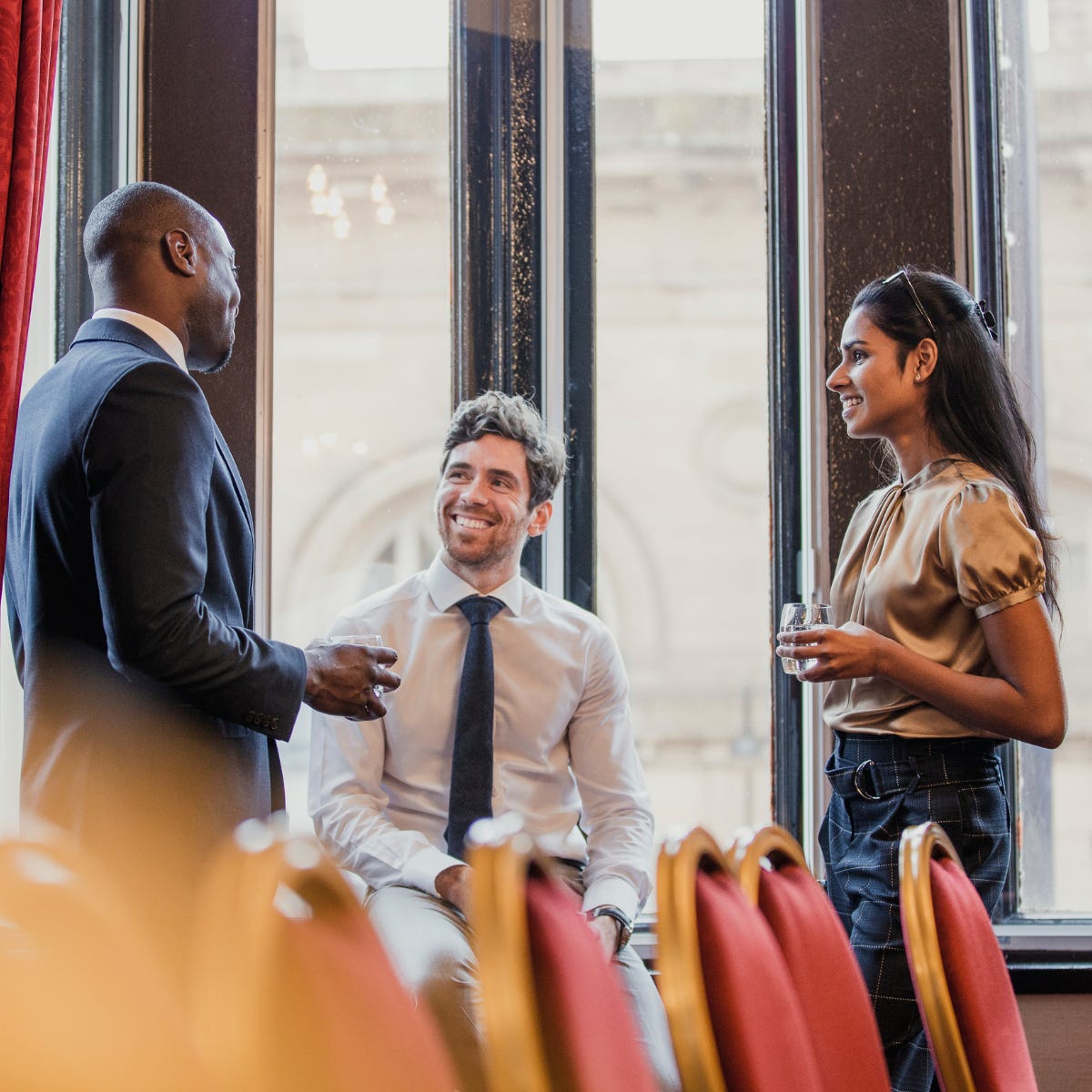Getting back out there: observations on in-person networking
What I noticed during my first in-person event since the pandemic began
This week I’m reflecting on the practical and emotional changes that have come along with transitioning into a post-lockdown world. I spent early October in Manchester for the Conservative Party Conference, my first in-person event since the pandemic started all those long months ago. They say you don’t know what you’ve got until it’s gone. Attending Conference was definitely eye-opening in that regard, and I’ve been thinking about what still applies and what new norms are being established. If you’ve got mixed feelings about attending in-person events, are planning or hosting an event, or are new to your career and have never experienced professional networking in person, this post is for you!
Norms about physical contact have changed
We all seem more mindful of people’s comfort levels around physical contact and personal space. Ask if you can give someone a hug or go in for a handshake—and do it in a way that gives them permission to say no.
Supporting people’s efforts to stay safe is appreciated
If you’re organising an event, think about ways you can protect your attendees and make it easy for them to protect each other. Everyone’s comfort levels are different but we have good guidance now on the safest courses of action. Reminders to distance, adequately spaced seating, verifying people’s vaccinations, giving people an outside option and providing simple courtesies like hand sanitiser are all really welcome.
Reconsider how you communicate on behalf of, and about, your organisation
I was interested to see the ways companies are changing their approach to communications, or reframing how they work. Two big takeaways for me were the promotion of working from home or hybrid work as a competitive advantage, and the use of QR codes for networking and engagement. The latter is timely; people have become used to using QR codes in day to day life for tasks like opening a restaurant menu. It makes sense that this is a newly-popular strategy for engagement. It’s no-touch, it’s easy, it functions like a business card of a flyer, and best of all it’s trackable. Even LinkedIn is providing QR code support for personal profiles.
Lean into the weirdness, but evolve
We’re all a little under-socialised lately, right? People who are showing up for in-person events are desperate to meet new people and connect with old contacts—use that to your advantage! If you’re new in your career, now is the time to get out there and capitalise on everyone’s relief at being able to attend these events again. Recognise that we’re all relearning some of those skills. You’ll find that getting in front of the right decision makers and stakeholders is so much easier in person than virtually. Dropping someone an email just isn’t the same as an in person meeting where you can rely on shared attendance and casual conversation to connect.
If you’re organising something in-person you can brand it as a big social and networking opportunity. Acknowledge that things are a little different, reassure your attendees that you’re being responsible, and consider offering creative icebreakers and ways to facilitate new connections. And consider who might be left behind as we move back into in-person environments. It’s easy to make assumptions about who can participate, but you don’t have the option of convenient trackable links and sign-ups to tell you exactly where your audience is coming from. Your audience also can’t rely on post-conference recordings or networking opportunities if they can’t attend in-person. Virtual accessibility has benefited people with less flexible schedules, childcare arrangements, complex out-of-work responsibilities and tight budgets. I’m interested to see how we can maintain spaces for as many people in our field as possible even when virtual options are no longer the standard.


